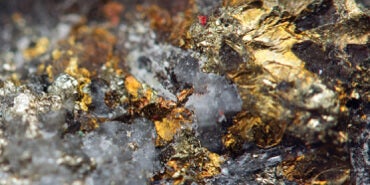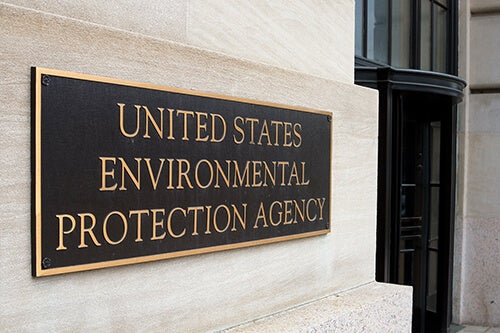On January 17, 2023, nine substances of very high concern (SVHCs) were added to the EU Registration, Evaluation, Authorization, and Restriction of Chemicals (REACH) Candidate List. The list now stands at 233 entries, though that does not include the breakouts. This adds an additional challenge to companies trying to maintain EU market access, given the Candidate List is a key component of the REACH regulation.
Any company that has SVHCs above threshold — 0.1 percent of weight by weight (w/w) or more than one metric ton per year — in their products is required to notify downstream customers. They are also required to follow and communicate safe-use practices to downstream users.
Additionally, companies must submit a notification to the Substances of Concern In articles, as such or in complex objects (Products) (SCIP) database.
Want to learn more about REACH and its implications for the EU market? Download our eBook, The REACH Handbook: Your Guide to SVHC Compliance.
The New SVHCs
The nine new SVHCs that have been added to the Candidate List are:
1. 1,1′-[ethane-1,2-diylbisoxy]bis[2,4,6-tribromobenzene], CAS: 37853-59-1, EC: 253-692-3
What is it?
-
- No recorded data on ECHA system
Where is it typically found?
-
- No recorded uses on ECHA system
2. 2,2′,6,6′-tetrabromo-4,4′-isopropylidenediphenol, CAS: 79-94-7; EC: 201-236-9
What is it?
-
- Reactive flame retardant applied in polymer resins
Where is it typically found?
-
- Electronic components (epoxy coated/printed circuit boards) consumed in complex products such as machinery, mechanical appliances, and electrical/electronic products (computers, cameras, lamps, refrigerators, washing machines)
- Plastic products (food packaging and storage, toys, mobile phones)
- Paper and textiles
3. 4,4′-sulphonyldiphenol, CAS: 80-09-1, EC: 201-250-5
What is it?
-
- Flame retardant applied in polymer resins
Where is it typically found?
-
- Chemicals
- Lead (gloves, shoes, purses, furniture)
- Paper (wallpaper)
- Paper in printed articles (newspapers, books, magazines, printed photographs)
- Paper in personal hygiene articles (nappies, feminine hygiene products, adult incontinence products, tissues, towels, toilet paper)
4. Barium diboron tetraoxide, CAS: 13701-59-2, EC: 237-222-4
What is it?
-
- No recorded data on ECHA system
Where is it typically found?
-
- Paints, coatings, and polymers
5. Bis(2-ethylhexyl) tetrabromophthalate covering any of the individual isomers and/or combinations thereof, Substance group containing one child member
What is it?
-
- Flame retardant and plasticizer
Where is it typically found?
-
- Flexible polyvinyl chloride (wire and cable insulation, film and sheeting, carpet backing, coated fabrics, wall coverings, and adhesives)
- Machinery, mechanical appliances, and electrical/electronic products (computers, cameras, lamps, refrigerators, washing machines)
- Plastic Products (Food packaging and storage, toys, mobile phones)
- Rubber Products (tires, shoes, toys)
6. Isobutyl 4-hydroxybenzoate, CAS: 4247-02-3, EC: 224-208-8
What is it?
-
- Substance used in formulations or re-packing.
Where is it typically found?
-
- Coating products
- Fillers
- Putties
- Plasters
- Modeling clay
- Inks
- Toners
7. Melamine, CAS: 108-78-1, EC: 203-615-4
What is it?
-
- Substance used in articles, formulations, or re-packing.
Where is it typically found?
-
- Vehicles (personal vehicles, delivery vans, boats, trains, metro, or planes)
- Plastic products (food packaging and storage, toys, mobile phones)
- Metal products (construction and building materials used for roof sheets, pipes)
- Fabrics
- Textiles
- Apparel (construction and building materials used on the floor or walls: carpets, rugs, tapestries)
- Furniture plastic products (furniture and furnishings, including furniture coverings)
- Laboratory chemicals
- Polymers and resins
- Coating products
- Adhesives and sealants
- Leather treatment products
8. Perfluoroheptanoic acid and its salts, Substance group containing four members
What is it?
-
- No recorded data on ECHA system
Where is it typically found?
-
- No recorded uses on ECHA system
9. Reaction mass of 2,2,3,3,5,5,6,6-octafluoro-4-(1,1,1,2,3,3,3-heptafluoropropan-2-yl)morpholine and 2,2,3,3,5,5,6,6-octafluoro-4-(heptafluoropropyl)morpholine, EC: 473-390-7
What is it?
-
- No recorded data on ECHA system
Where is it typically found?
-
- Used in articles, by professional workers (widespread uses), in formulation or re-packing, at industrial sites, and in manufacturing.
These substances may be placed on the Authorisation List in the future. If they end up on that list, these substances will be completely prohibited unless companies are approved, after applying, by the European Commission.
Identifying Breakout Substances
The 233 substances on the Candidate List don’t represent every substance that has communication requirements or compliance. Breakout substances are also included in that list.
The term “breakout substances” is sometimes used to describe derivatives of substances and substance groups that are on the published list. They do contain unique EC or CAS identifiers, but they, traditionally, have not been referred to as Candidate List substances.
This list includes 474 substances, including these breakout substances.
If you would like to find breakout substances, the best way is to use the EU Candidate List Table and review the supporting documentation attached to each substance. You can also download the full substances dataset.
Protect Your Market Access With Assent
Every year, more substances are added to the Candidate List. That means companies need to be on the lookout for these updates and adjust accordingly. With the Assent Supply Chain Sustainability Platform, you can streamline supply chain data collection activities to support risk mitigation activities. With this deep insight into your supply chain, you can mitigate potential non-compliance risks, like lost market access and fines.
If you would like to learn more about how Assent can help you meet your requirements, explore our REACH solution.
To learn more about the Assent platform, reach out to us Contact us.









